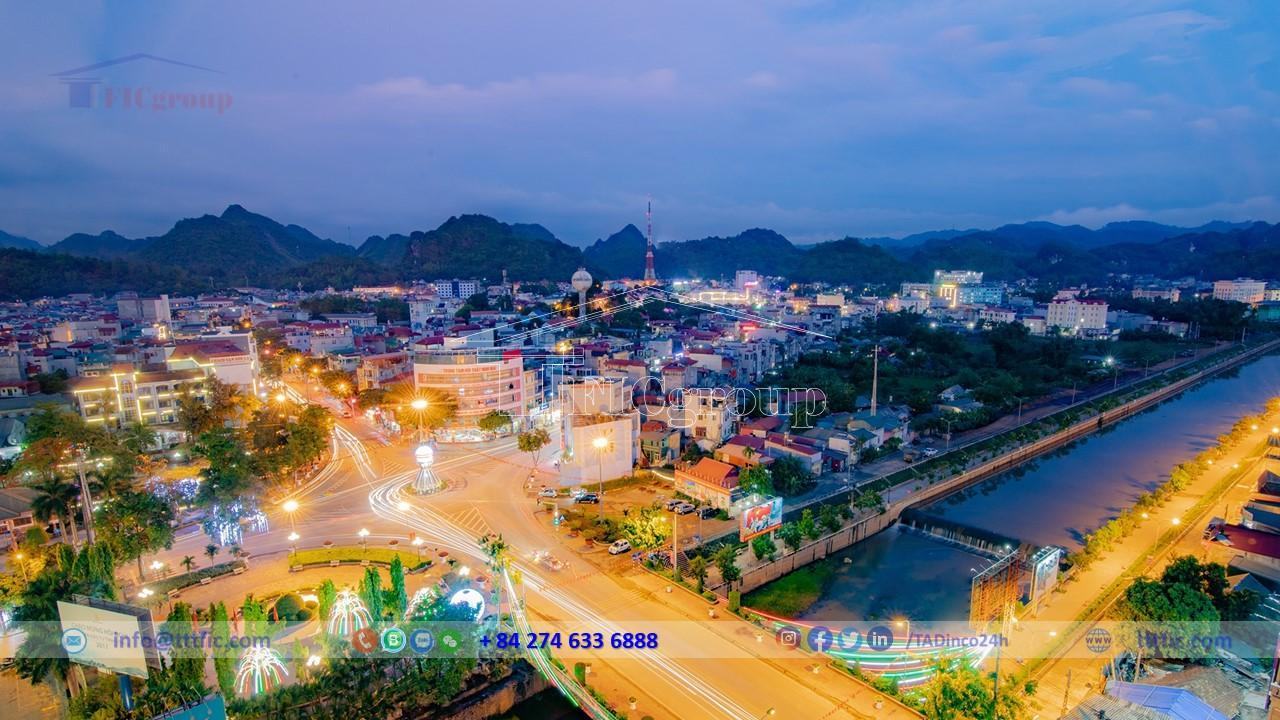Son La Province:
Son La Province, located in the Northwest region of Vietnam, is a mountainous province with high elevation. It holds the 31st position in terms of population, the 40th position in terms of Gross Regional Domestic Product (GRDP), the 49th position in terms of per capita GRDP, and the 63rd position in terms of GRDP growth rate among administrative units in Vietnam in 2018. With a population of 1,242,700 people, its GRDP reached 47,223 billion Vietnamese Dong (equivalent to 2.0509 billion USD), the per capita GRDP was 38 million Dong (equivalent to 1,650 USD), and the GRDP growth rate was 5.59%. Moreover, Sơn La holds the distinction of being the largest province in the Northern region of Vietnam.
Geography of Son La Province:
Geographical location:
Sơn La province, covering an area of 14,174.5 km², accounts for 4.27% of Vietnam’s total area, ranking third among the 63 provinces and cities. Its geographical coordinates are between 20°37′ – 22°02′ latitude North and 103°11′ – 105°02′ longitude East.
The provincial administrative center is the city of Sơn La, located approximately 302 km from the capital city of Hanoi. It shares its borders with Yên Bái and Lai Châu provinces to the north, Phú Thọ and Hoà Bình provinces to the east, Điện Biên and Luangprabang (Laos) provinces to the west, and Thanh Hóa and Huaphanh (Laos) provinces to the south. Sơn La has a national border stretch of 250 km and a total length of boundary lines with other provinces of 628 km.
The extreme points of Sơn La province are as follows:
- The northernmost point is located in Cà Nàng commune, Quỳnh Nhai district.
- The easternmost point is located in Chiềng Yên commune, Vân Hồ district.
- The westernmost point is located in Mường Lèo commune, Sốp Cộp district.
- The southernmost point is located in Tân Xuân commune, Vân Hồ district.
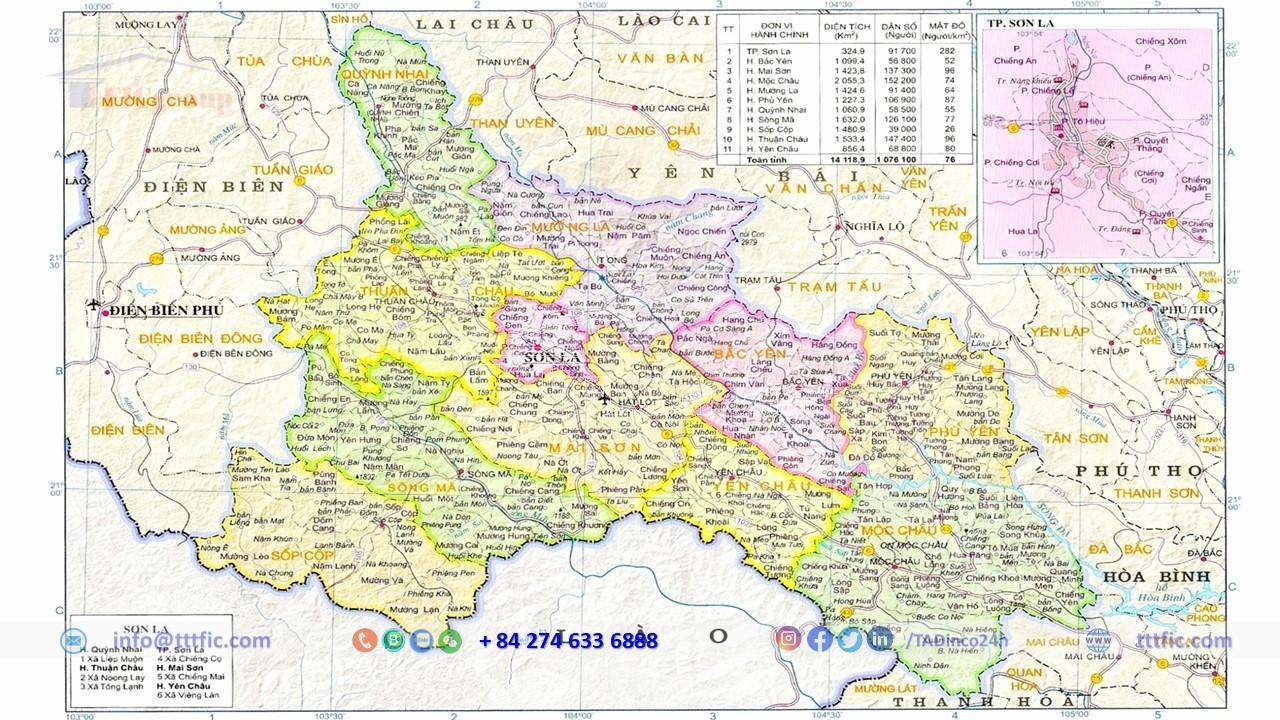
Topographic:
Sơn La, an inland province located 302 km from Hanoi along National Highway 6, features three border crossings with Laos: Chiềng Khương international border gate, Lóng Sập border gate, and Nà Cài border gate. With an average elevation of 600-700m above sea level, the province exhibits rugged and deeply cut terrain. Approximately 97% of its natural area belongs to the basins of the Da River and Mã River, while it boasts two plateaus, Mộc Châu Plateau and Sơn La Plateau, known for their relatively flat topography. Sơn La, together with Hòa Bình, Điện Biên, and Lai Châu provinces, forms the highland area of the northern region. Hills and mountains dominate the majority of the province’s landscape, with notable peaks concentrated in districts such as Sốp Cộp, Thuận Châu, and Bắc Yên.. The presence of the Mã River and Da River carves valleys, with their strong currents causing erosion and valley expansion. The eastern part of Sơn La encompasses vast plateaus, including the renowned Mộc Châu Plateau with its expansive grasslands suitable for livestock farming. This fragmented terrain, featuring numerous rivers, waterfalls, and rapids, serves as a valuable source of hydroelectric power. Notably, the Sơn La Hydropower Plant, currently the largest in Southeast Asia, is situated in this region. Furthermore, the northern and eastern regions are characterized by imposing mountain ranges, obstructing transportation and giving rise to notable mountain passes such as Pha Đin Pass, Tà Xùa Pass, Chiềng Đông Pass, Cón Pass, and Lũng Lô Pass.
Climate:
Sơn La experiences a subtropical mountainous climate, characterized by a cold and dry winter, as well as a hot and humid summer with abundant rainfall. This unique climate is attributed to the rugged and deeply cut terrain, creating diverse microclimates that benefit the agricultural and forestry sectors. The Mộc Châu Plateau is suitable for temperate crops and livestock, while the areas along the Đà River support lush tropical forests throughout the year.
In the past two decades, Sơn La has witnessed a steady increase in its average annual temperature, with a rise of 0.5°C to 0.6°C. Currently, Sơn La City has an average annual temperature of 21.1°C, while Yên Châu averages 23°C. Conversely, the region has experienced a decreasing trend in average annual rainfall, with Sơn La City receiving 1,402 mm and Mộc Châu receiving 1,563 mm. The average annual humidity has also declined. The rainy season typically concludes in early September, followed by an extended and harsh dry season that lasts until late April of the following year. This dry season brings about drought and water shortages, exacerbated by hot and dry westerly winds in the final months (April to June), which significantly impact agricultural production. Salt fog, hailstorms, and flash floods further pose detrimental risks.
Animal and plant resources:
Sơn La possesses abundant and diverse fauna and flora resources, with numerous rare species of animals and plants.
The forests of Sơn La harbor precious genetic resources of rare animals and plants, including special forest areas of scientific value such as Sốp Cộp, Xuân Nha (Mộc Châu), Tà Xùa (Bắc Yên), and Co Pia (Thuận Châu).
Regarding flora, there are 161 families, 645 genera, and 1,187 species, encompassing angiosperms, gymnosperms, tropical, subtropical, and temperate plants. Notable families include orchids, ferns, bamboos, mahogany, raspberries, and strawberries.
Various families feature numerous species, such as daisies, grasses, legumes, dipterocarps, evergreen oaks, orchids, citrus fruits, cotton, berries, and coffee.
Rare plant species include pơ mu, bamboo, lát hoa, bách xanh, nghiến, chò chỉ, du sam, two-leaf pines, three-leaf pines, strawberries, dổi, jackfruit, rattan, clove, saffron, angelica, medicinal herbs, and rhinoceros ferns.
Endangered plant species include pơ mu, bamboo, lát hoa, bách xanh, nghiến, chò chỉ, three-leaf pines, dổi, clove, saffron, and jackfruit.
As for forest fauna, there are 101 mammal species across 25 families, 347 bird species in 47 families, 64 reptile species in 15 families, and 28 amphibian species in 5 families.
Prominent fauna species include squirrels, porcupines, deer, birds, and snakes.
Rare animal species recorded in the red book include elephants, tapirs, black gibbons, tigers, leopards, bears, civets, wolves, flying squirrels, macaques, otters, brown mongoose, and flying lizards.
Land resource:
Ranked fifth among 64 provinces and cities, Sơn La boasts an expansive natural area. Currently, 39.08% of the land is dedicated to cultivation, benefiting from its fertile soil and rich arable layer, which nourish high-value crops and livestock.
However, a significant portion of Sơn La’s total area, amounting to 60.92%, remains unused land and water bodies. The average availability of agricultural land reserves per person is limited, amounting to only 0.2 hectares.
To cater to the long-term development of industrial crops like coffee, tea, and fruit trees, Sơn La has set aside a land reserve of 23,520 hectares. Additionally, an additional 1,167 hectares have been allocated for pasture development to support livestock farming.
Water resource:
Every year, Sơn La province has a surface water resource of approximately 19 billion cubic meters, mainly from rainfall stored in two main river systems:
- The Đà River originates from Yunnan province in China, with a basin area in Sơn La of 9,844 square kilometers. It flows through Sơn La for 250 kilometers, supplying a total water volume to the Sơn La hydroelectric plant of 47.6 billion cubic meters.
- The Mã River originates from Điện Biên and Tuần Giáo – Lai Châu districts. It flows through Sơn La for 93 kilometers, with a basin area of 3,978 square kilometers.
- In addition to the two main river systems, Sơn La province also has 35 major streams and hundreds of small streams running through steep terrain, featuring numerous waterfalls.
Economy:
Sơn La province’s GRDP in 2022 exceeded the target, ranking 6th among regions in Vietnam. The growth was driven by a 17.42% surge in the industrial sector, 7.91% rise in services, and 2.23% increase in agriculture, forestry, and fisheries. The total GRDP reached 34,245.69 billion VND, with contributions from each sector.
Despite favorable weather, the agriculture sector faced challenges like low fruit set due to acid rain. However, the industrial sector played a significant role in driving growth, while services showed signs of recovery. The province’s estimated total GDP for 2022 was 64,508.06 billion VND.
Agriculture, forestry, aquaculture:
Agriculture:
The annual crop production in Sơn La province experienced some changes compared to the previous year. The total crop area reached 216,775 hectares, with a 0.96% increase. The area dedicated to rice cultivation decreased by 2.01%, while other annual crops like tuber crops, sugarcane, fiber crops, vegetable crops, and other crops saw varying increases and decreases in their respective areas. The total grain production was estimated at 523,195 tons, a decrease of 4.08%.
Regarding perennial crops, the total area increased by 3.45%, reaching 101,511 hectares. Fruit trees accounted for the majority of the perennial crop area, with an increase of 3.95%. However, certain fruit trees experienced reduced yields due to low fruit setting caused by acid rain during the flowering period. Industrial crops and spice and medicinal plants also saw changes in their respective areas and yields.
Livestock production remained stable, with an overall increase in the province. However, there were sporadic outbreaks of diseases like African swine fever, foot-and-mouth disease, and avian influenza. The estimated livestock population included buffalo, cattle, pigs, and poultry, with varying changes compared to the previous year. The meat production for these animals also showed fluctuations.
Overall, the crop and livestock production in Sơn La province experienced both positive and negative changes, influenced by factors such as economic efficiency, weather conditions, disease outbreaks, and market demand.
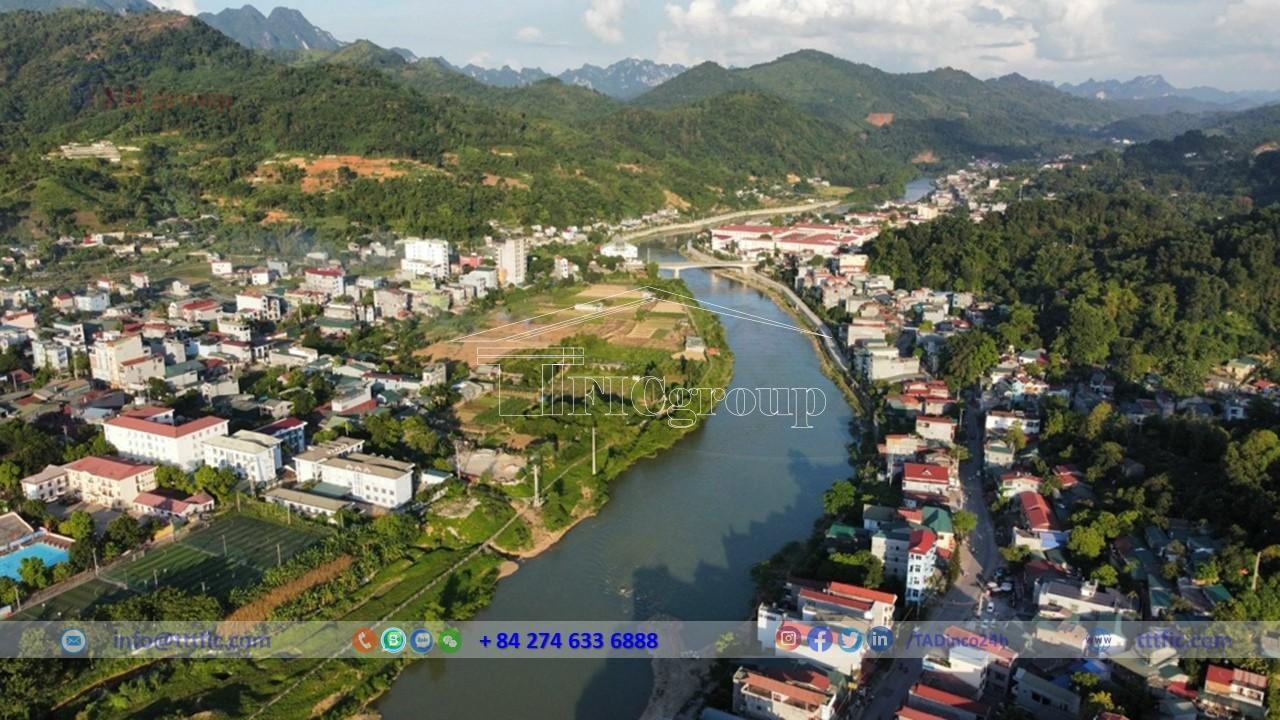
Forestry:
In 2022, the afforestation area in Sơn La province saw significant growth, reaching 6,314 hectares, a 159.84% increase from the previous year. This expansion was primarily driven by the support of the Sustainable Forestry Development Project. Over 90,000 trees, including species like black trám, white trám, lát hoa, giổi, and sấu, were planted along various locations such as transportation corridors, school premises, and public buildings.
The volume of timber exploitation reached 27,268 m³, marking a 4.48% increase compared to the previous year. Additionally, the firewood exploitation volume reached 864,806 ste, showing a slight increase of 0.24%.
The forest ranger forces played a commendable role in 2022 by effectively conducting forest patrols and inspections, cracking down on violations related to logging, trading, transportation, and processing of forestry products. They managed to handle a total of 400 violations in the forestry sector, resulting in a contribution of 3,108 million VND to the state budget. Notably, there were 246 cases of illegal deforestation, causing a damage area of 20.46 hectares.
To combat forest fires, the province implemented various measures. They issued a directive and other guidelines, established coordination regulations between relevant departments, and assigned specialized units to regularly inspect and develop fire prevention plans. Districts, communes, forest owners, and households have signed commitments for forest protection and fire prevention.Despite these efforts, there was one incident of a protective forest fire in Quỳnh Nhai district, which affected an area of 5.32 hectares.
Aquaculture:
The aquaculture and fisheries sector remained stable throughout the year, with a predominant focus on rotational farming rather than intensive farming due to high investment costs and an uncertain market. However, the province has significant potential for aquaculture development with its large reservoir area and artificial river and lake systems. Favorable weather conditions in 2022, with evenly distributed rainfall throughout the year, ensured a stable water level in the reservoirs. Additionally, the province implemented several supportive policies to encourage the development of cage fish farming on the reservoirs.
The total harvested aquatic products for the year reached 9,034 tons, a 4.17% increase compared to the previous year (estimated at 720 tons in December, a 2.71% increase). Specifically, fish production reached 8,549 tons, a 4.29% increase, shrimp production reached 248 tons, a 3.98% increase, and other aquatic products reached 237 tons, a 0.21% increase. Breaking it down further, the harvested production reached 1,302 tons, a 1.72% increase compared to the same period of the previous year (achieving 110 tons in December, a 1.85% increase). The aquaculture production reached 7,732 tons, a 4.60% increase (achieving 610 tons in December, a 2.87% increase), including 7,612 tons of fish, 3 tons of shrimp, and 117 tons of other aquatic products. Investments in good pond management and improvement, as well as the application of new solid iron frame cages with durable and highly resistant special nets, have contributed to the increase in aquaculture production.. Scaling up various models of farming salmon, sturgeon, and blue-clawed shrimp has proven to be highly effective.
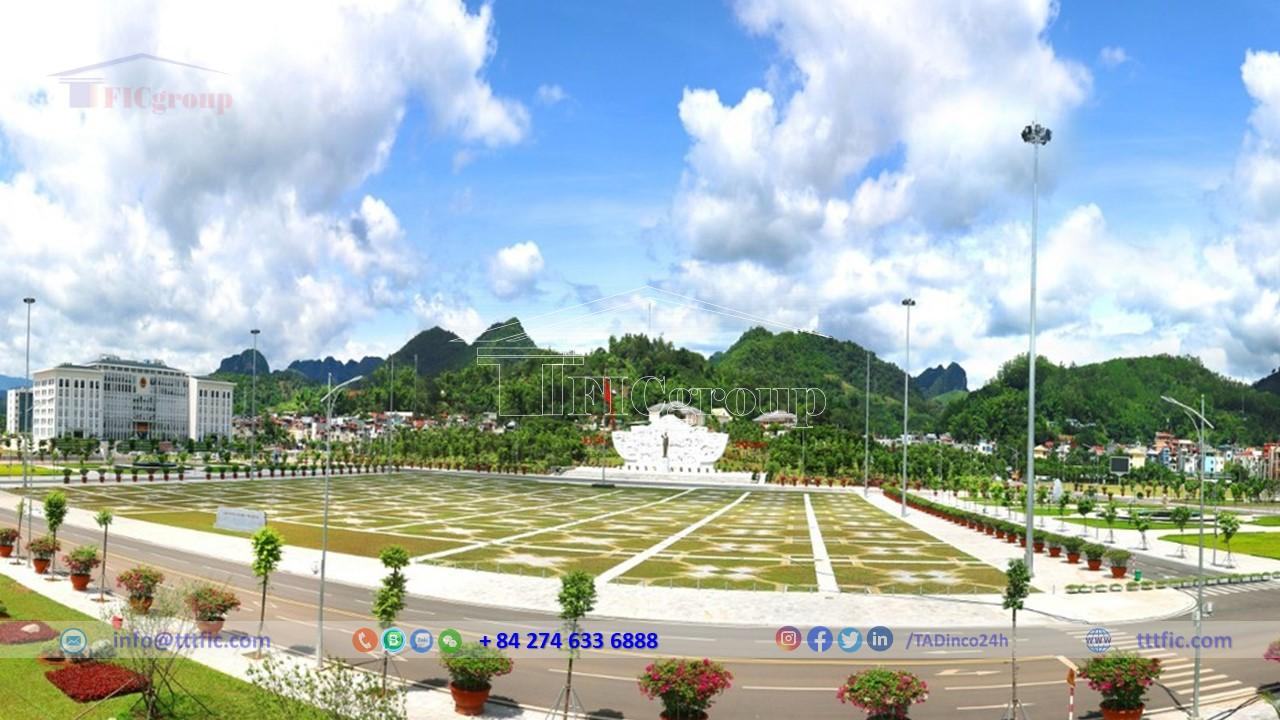
Industry:
Industrial production index:
The industrial production index in December 2022 increased by 3.69% compared to the same period last year. The mining industry saw a growth of 9.73%, while manufacturing and processing industry increased by 9.61%. The water supply, waste management, and wastewater treatment sector experienced a growth of 9.01%. However, the production and distribution of electricity, gas, hot water, steam, and air conditioning decreased by 0.76%. The estimated increase in the overall industrial production index for 2022 is 20.51%. The production and distribution of electricity, gas, hot water, steam, and air conditioning increased by 24.17%, manufacturing and processing industry increased by 11.14%, water supply, waste management, and wastewater treatment sector increased by 6.94%, and the mining industry increased by 6.26%.
Producing main products:
In 2022, most major products showed an increase in production compared to the previous year. Construction stone increased by 6.26%, fermented dairy products such as yogurt, milk, and acidified milk increased by 7.42%. The production and yield of coffee increased by 28.45% due to higher productivity and harvest. Green tea increased by 7.04%, purified water increased by 11.03%, nonwoven or knitted adult shirts increased by 39.99%, and printing products increased by 68.97% due to higher order volume for companies. Electricity production increased by 24.28%. However, Portland black cement decreased by 3.65% and rubber production decreased by 5.22% due to heavy rainfall during the first nine months, resulting in lower latex harvest.
Industrial Employment Index:
The estimated labor utilization index for industrial enterprises in December 2022 increased by 0.63% compared to the same period last year. State-owned enterprises decreased by 0.09% compared to the previous month, non-state enterprises increased by 2.0%, and foreign-invested enterprises remained stable. In terms of industry, the labor utilization index for the mining and production and distribution of electricity sectors remained stable, while the manufacturing and processing industry increased by 1.17%, and waste management and wastewater treatment activities increased by 0.12%.
The estimated labor utilization index for the year 2022 decreased by 2.22% compared to the same period. State-owned enterprises decreased by 25.82%, non-state enterprises increased by 22.51%, and foreign-invested enterprises remained stable. In terms of industry, the labor utilization index for the mining industry increased by 35.28%, the manufacturing and processing industry decreased by 5.36%, the production and distribution of electricity increased by 1.89%, and the water supply, waste management, and wastewater treatment sector increased by 2.32%.
Activities of business:
In 2022, the province received and processed an estimated 1,975 business registration applications, a 33.36% increase compared to the previous year. There were 560 newly established enterprises and affiliated units (including 266 companies and 294 household businesses), marking a 30.54% growth from the previous year. The registered capital amounted to 2,497.4 billion dong, reflecting a 36.65% decrease compared to the same period. Additionally, 101 enterprises and affiliated units were dissolved (48 companies and 53 non-business units), showing a 34.67% increase compared to the previous year. Furthermore, 143 enterprises and affiliated units temporarily suspended their operations (108 companies and 35 non-business units), experiencing a 28.83% increase. As for registration changes, there were 1,077 applications, representing a 36.85% increase compared to the same period.
By the end of December 2022, the total number of businesses in the province reached 3,250, with a combined registered capital exceeding 50,000 billion dong.
Finance – Banking:
Finance:
The financial sector provided leadership and guidance in implementing the main tasks and solutions for the development of the economy and the state budget in 2022. This was in accordance with Resolution No. 01/NQ-CP dated January 8, 2022, which outlined the objectives and measures for economic and social development, as well as the state budget estimate for 2021 issued by the government. The Ministry of Finance’s Circular No. 122 dated December 24, 2021, also provided guidelines for budget management in 2022. Additionally, Provincial People’s Committee’s Decision No. 2989/QD-UBND dated December 8, 2021, regulated the management and administration of the local budget in 2022.
The estimated state budget revenue for 2022 in the province is 4,580 billion dong, a 2.5% increase compared to the previous year. This includes an estimated domestic revenue of 4,550 billion dong, reflecting a 6.41% increase from the previous year.
The projected total state budget expenditure for 2022 is 14,978.67 billion dong, which is equivalent to 97.36% of the previous year’s figure. This budget allocation will timely meet the requirements of economic development, social welfare, national security and defense, foreign affairs, and other emerging tasks as directed by the province. Specifically, investment expenditure will amount to 2,017.72 billion dong, a 16.20% increase; regular expenditure will reach 10,667.35 billion dong, an 8.85% increase; debt repayment will be 2.5 billion dong; additional financial reserve expenditure will be 20 billion dong; budget contingency expenditure will be 261.35 billion dong; and other expenditure tasks will account for 2,009.74 billion dong.
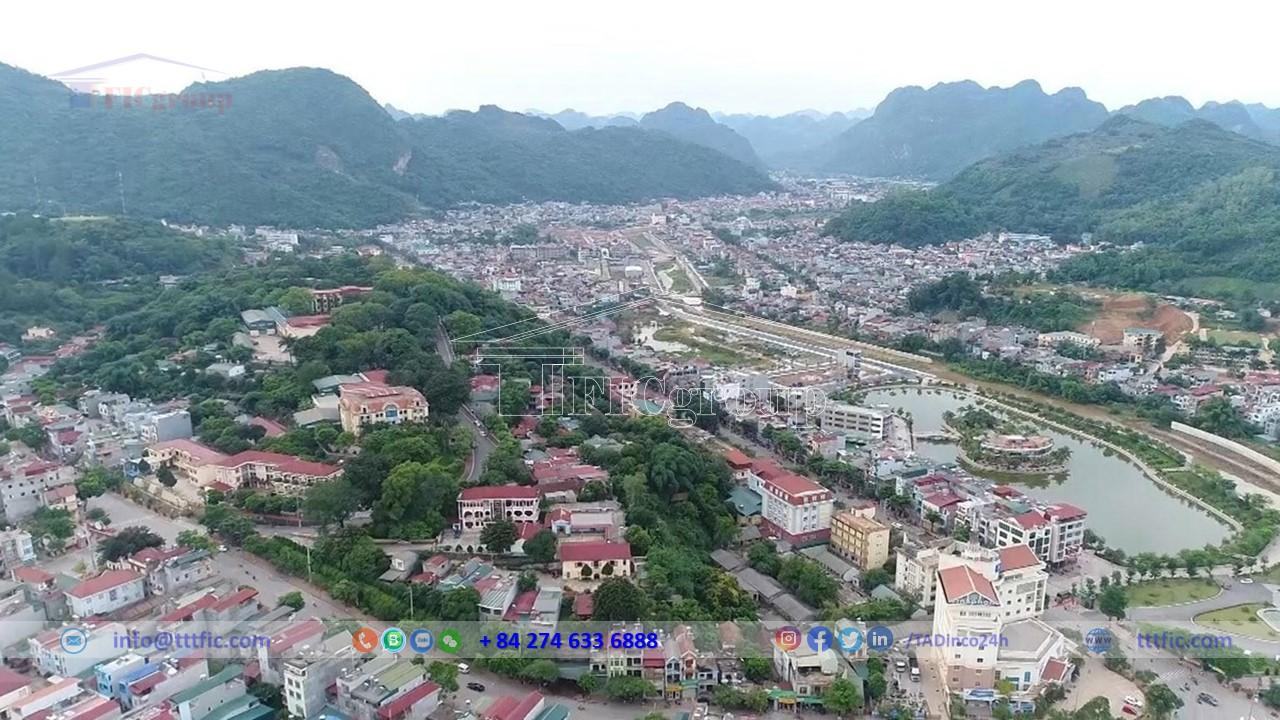
Banking:
The functioning of the local credit institutions remained stable, with estimated cash receipts through the bank fund reaching 14,000 billion dong in December 2022, while cash disbursements are projected to be 15,000 billion dong. Compared to the previous year, cash receipts increased by 0.35% and cash disbursements increased by 2.07%. For the year 2022, it is estimated that total cash receipts through the bank fund will reach 144,588.53 billion dong, a 3.67% increase, while total cash disbursements will be 145,141.60 billion dong, a 3.47% increase compared to the previous year.
As of December 2022, the estimated outstanding credit balance is 44,800 billion dong, indicating a 4.36% increase compared to the previous year.. Of this amount, short-term debt amounts to 20,500 billion dong, a 1.73% increase, while medium and long-term debt reaches 24,300 billion dong, a 6.69% increase. Within the total outstanding debt, the debt provided to policy beneficiaries until November 31, 2022, stands at 5,455.6 billion dong, while the non-performing loans throughout the region amount to 607 billion dong.
The Kinh ethnic group was followed by 186,999 people (15.76%), the Mông ethnic group by 184,618 people (15.59%), the Mường ethnic group by 89,196 people (7.53%), and the Xinh Mun ethnic group by 25,544 people (2.16%). This includes 22,195 billion dong in savings deposits, representing a 13.82% increase, and 6,800 billion dong in deposits from economic organizations, reflecting a 7.35% increase.
Social:
Sơn La Province benefits from its young population and a substantial number of children under 15, which contributes to a plentiful workforce. Employment in various sectors has consistently increased in the province, rising from 501.89 thousand people in 2004 to 566.39 thousand people in 2007, 635.84 thousand people in 2009, and 772.45 thousand people in 2011. By 2014, the count reached 730.29 thousand people, comprising 63.42% of the total provincial population.
During the resettlement periods from 2004 to 2010 and 2011 to 2015, the relocated areas achieved stability, accompanied by the implementation of socioeconomic development policies for the Sơn La hydroelectric reservoir region. These phases also unveiled slight variations in gender ratios across different years and locations within the province.
Regarding ethnic composition, according to the Provincial Ethnic Committee’s report in July 2015, Sơn La Province had a total population of 1,184,437. The majority consisted of the Thai ethnic group, comprising 636,727 individuals (53.76% of the total population). They were followed by the Kinh ethnic group with 186,999 people (15.76%), the Mông ethnic group with 184,618 people (15.59%), the Mường ethnic group with 89,196 people (7.53%), and the Xinh Mun ethnic group with 25,544 people (2.16%). Other ethnic groups had smaller proportions, including the Dao ethnic group with 20,698 people (1.75%), the Khơ Mú ethnic group with 14,542 people (1.23%), the Kháng ethnic group with 9,879 people (0.83%), the La Ha ethnic group with 10,326 people (0.87%), the Lào ethnic group with 3,904 people (0.33%), and the Tày ethnic group with 1,636 people (0.14%). The distribution of the population among different ethnic groups varies across urban areas, districts, towns, and villages.


